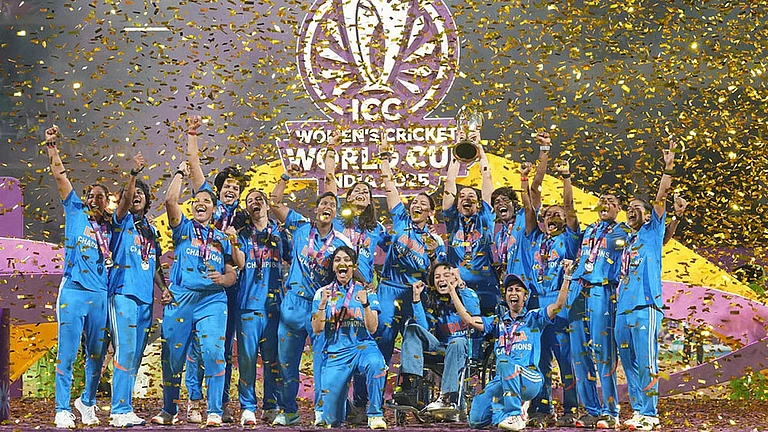Men always say that as the defining compliment, don’t they? She’s a cool girl. Being the Cool Girl means I am a hot, brilliant, funny woman who adores football, poker, dirty jokes, and burping, who plays video games, drinks cheap beer, loves threesomes and anal sex…Hot and understanding. Cool Girls never get angry; they only smile in a chagrined, loving manner and let their men do whatever they want.
Quoted excerpt from the movie Gone Girl reflects the conflicting notions of what men find attractive in women. The ‘cool girl’ aesthetic burdens women with embodying both feminine and masculine traits to best accommodate the needs and demands of men. Women are touted as ‘cool’ when their conformity to socially determined practices of the feminine are not tied with the expectation of receiving the equivalent from men.
In complying with the diligence of the feminine performance, women should acquire a stance of low expectations and normalise underperformance of men in their socially given gender roles. Women invested in the lowered expectations of physical, emotional and financial labour from men are rewarded with social affirmatives such as financially independent, sexually adventurous and emotionally non-dramatic—in other words ‘cool’.
The conventional notions of the feminine viewed as biologically received traits in women, have been critiqued by what is known as the second wave of feminism. Feminists posit that gender and its social performance in femininity are not biologically derived, but socially constructed and regulated. This consciousness was to be the source of their women’s liberation from the structures of patriarchy.
The culture of consumerism co-opted this grammar of women’s liberation to promote a ‘post-feminist’ agenda—the belief that feminism as a social movement of women as a collective is no longer a relevant ideology for the emancipation of women. The Neoliberal capitalist-consumerism casts the feminist emancipatory principles of equality such as workplace equality, equal wages, as individual enactments. (Lazar in Gill and Schraff 2011)
Picture the middle-class female protagonists of the 1990s TV commercials. The ‘fair and lovely’ women are shown inconsolably sad for their perceived unappealing appearances, particularly their skin tone. Cut to buying a fairness cream, they are transformed into pretty and successful women, akin to Yashraj film heroines. Her choice of cream is the individual enactment of femininity, an experience of empowerment.
Beauty products such as creams, gels, and lotions were dangled at women in the developing world as the pathway to experiencing the joys of feminine beauty and freedom. The red lips, shorter hairdos, high heels and similar styling of women’s bodies came to be seen as the western ‘modernist’ replacements of culturally conservative notions of femininity. Gaining visibility as a ‘self-fashioning subject,’ women felt some sense of agency, albeit limited, to question the conservative cultural norms of modesty and restraint. The free-market economy’s idealisation of the ‘modern’, ‘confident’ and ‘new-age’ woman, limited women’s emancipation to its consumerist imperatives, never really translating into meaningful freedoms for women. (Curry, Kelly and Pomerantz, in Gill and Schraff 2011).
The grand narrative of globalisation regarding the freedoms and opportunities for women obscures the harsh realities faced by the ‘modern’ working women in India. The Asian region has seen an increased participation of women in the labour force under the processes of globalisation. However, the systems of production and consumption adopted under ‘economic reforms’ remain predicated on the systematic undervaluing of women’s productive labour.
The formal sector is modelled after the ‘male-breadwinner’ schema that privileges and incentivises men while continuing to keep women overworked and unpaid/underpaid. One important site of the social construction of gender in the neoliberal era is the incorporation of sexual industriousness within the feminine beauty standard. The digital turn of capitalism has achieved a more thorough and meticulous exploitation of women’s bodies. The dawn of new technologies such as the front-facing phone camera, and the mushrooming of social media sites, have led to an improvement in the modalities of regulation and control. The ubiquitousness of digital technology, deemed as a harbinger of newer communication technology and freedom of expression, has led to stricter regulation of women’s bodies and singularisation of feminine beauty standards.
The ideal beauty for women is conveyed through certain figurative types that are conceived and mediated by digital technologies. The spectatorship of social media apps and sites and their ‘manospheres’ have effected a hypersexualisation of women’s bodies, activating processes of women’s compliance to certain standard types. Women interact with their hypersexualisation by performing the figurative types through a ‘sexual entrepreneurship’ or a sexual industriousness. (Gill and Schraff 2011) In performing sexual industriousness, women negotiate with the demands of hypersexualisation to gain positive affirmation for their appearance. Certain types are formed that are deemed popularly valid or invalid by the mass majority of the digital public sphere.
Women who perform better by adopting certain aesthetics of the body gain positive validation, while women who do not fit the stereotypes are punished with negative remarks of contempt and hostility. Seeking validation from male spectators for appearance is seen as an appreciable trait in women, that makes them ‘sexy’ and socially relevant.
Madonna and Selena Gomez, two women of very different ages, face intense age and body related scrutiny and shaming.
American socialite Kim Kardashian gained wide appreciation for pursuing unrealistically high beauty standards through a host of cosmetic procedures, products and beauty regimes that demonstrate her dedication towards looking ‘sexy’. Indian Gen Z celebrities mimic the benchmarks set by the western fashion and beauty industry, a process in which plurality in the plural expressions of self are flattened into the standardised ‘plump lips-high cheeks-smooth skin’ ideal.
This unrealistic aesthetic constitutes the mapping of algorithmically established features on women’s bodies through ‘corrective’ procedures and beauty practices in order to achieve the ‘Instagram look’ or the ‘cyborg look’.
The popular American songwriter and singer, Taylor Swift, has been berated with negative stereotypes and labels in the American media for writing from a female perspective and catering to a predominantly female audience. Instead of readily adopting the lens of hypersexualisation, Taylor’s songs humanise her and narrate a wide range of emotions outside of the sexual—a rare thing in music, fashion and pop culture.
When women choose personal autonomy over conforming to the intrusive and meticulously controlling standards of feminism, they earn tags such as ‘playing victim card’, ‘fake feminism’ and ‘fainting-couch feminism’.
The online hatred towards popular female celebrities and pop stars for perfectly normal processes like getting older or experiencing hormonal changes in the body is illustrative of the many ways in which women are disciplined and regulated in adherence to the rigours of beauty. Middle-aged women are looked down upon for the simple act of appearing as their age, without pursuing to achieve a decades-younger look. It is considered ‘letting go of yourself’, distasteful, and even disgusting for women to appear in public with greying hair, loosened skin or with the smallest amount of weight gain.
Such a transition must remain hidden or invisible from public view. Women must pursue means and ways of looking not just younger, but decades younger. This is observable in the body shaming of celebrities such as the Indian actress and former Miss World, Aishwarya Rai. She has been derogatively termed as ‘aunty’, an Indian term used to belittle women for bodily unattractiveness, lack of youthfulness, or looking sexually unappealing. She has been specifically criticised for her looks and fashion, in her 40s, almost as a backlash for undergoing the natural process of ageing.
Popular American pop culture figures—Madonna and Selena Gomez—two women of very different ages, face intense age and body related scrutiny and shaming, for ‘appearing older’. Gomez faced brutal trolling in her recent public appearances, for her fuller figure and ‘broader face’, which is natural for a 30-year-old woman. Madonna was age-shamed for her 2023 Grammys appearance for what she described as the refusal of society to “celebrate women past the age of 45”. Conversely, there is a tendency of heavily sexualising and adultifying the teenaged female actors of Disney’s children’s shows. Women and girls of all ages are supposed to adhere to performing youthfulness that lends itself to sexualisation of their bodies.
Performance of youthfulness in women plays on the notions of youth imagined as desirability of innocence and submissiveness. The standards of youthfulness that make women look desirable in the digital age involve aspects of sexual submission, exhibitionism, grooming and prepubescence. Women’s sexual surrender and resignation have been crafted as ‘sexy’.
The fetishisation of sexual vulnerability in women positions them with having a lowered sense of bodily boundaries and flexible readings of consent. Case in point is the portrayal of Tripti Dimri’s character in the hit Hindi film Animal. Her character in the movie, also called ‘Bhabi 2’, earned her the title of the ‘national crush’. She plays the feeble and ‘scarred’ ‘other woman’, a sexual trope that conveys a release from the grip of male sexual responsibility, socially and legally owed to the first woman/wife. The title used for Dimri’s character became popular for her performance of surrender and vulnerability. Her character was curated as a combination of low self-esteem, emotional vulnerability caused by trauma or hardship, and a compulsory sexual agency that lowers her protective guard for her physical boundaries.
The expression of agency, or the ability to define oneself outside of their body, is discouraged in women. A trait that threatens the reign of patriarchal control over the bodies of women and girls. Women must persevere; they must remain industrious in the labour of appearing sexier, much younger and docile, to the male gaze. The pressures of feminine beauty commands them to.
(Views expressed are personal)
Abhiruchi Ranjan is an Assistant professor in the department of political science and history at Christ university
MORE FROM THIS ISSUE
(This appeared in print as ‘The ‘Cool Girl’ Burden’)





























